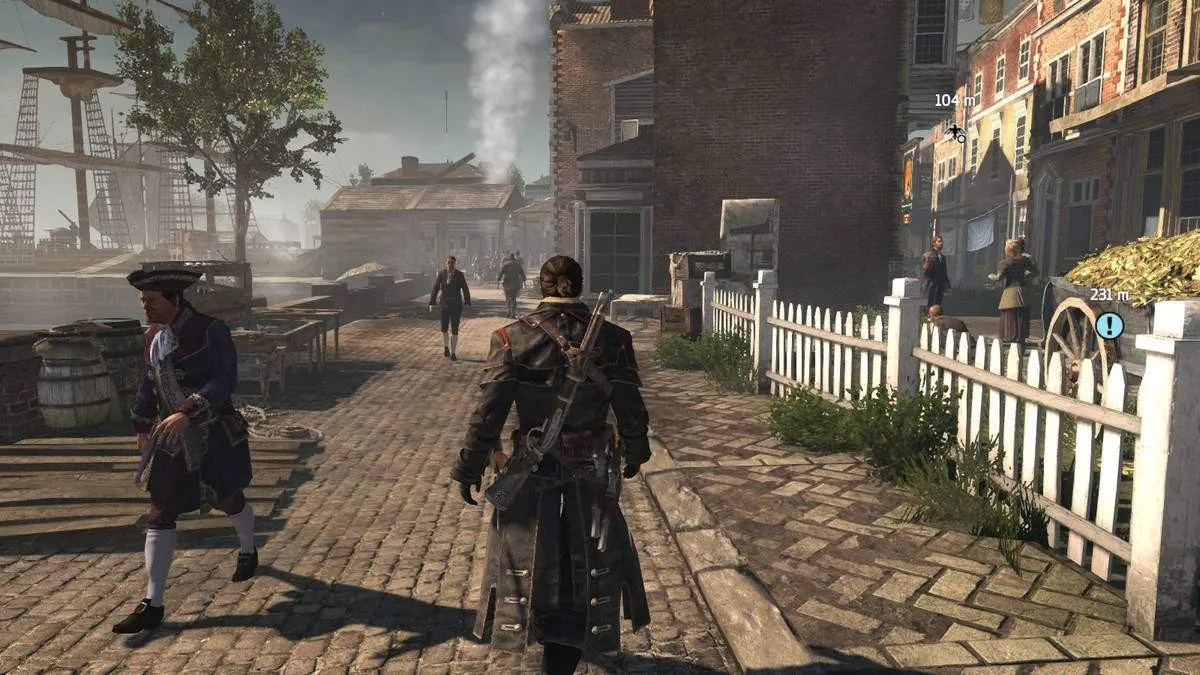
Assassin’s Creed: Rogue – A Templar’s Perspective
Contents
Shay Patrick Cormac, an Assassin, once swore to protect the innocent and uphold the Creed. But what happens when the Creed itself becomes corrupted? Assassin’s Creed: Rogue explores this very question, offering a unique perspective on the age-old conflict between the Assassins and the Templars. This installment shifts the narrative, placing players in the shoes of Shay, a former Assassin who becomes disillusioned with his brotherhood and ultimately joins the Templar Order.
In a world where lines blur between good and evil, Rogue challenges the conventional narrative and explores the complexities of morality. It begs the question: Is betrayal justifiable when it serves a greater purpose? And how many lives are worth sacrificing for the sake of freedom when nothing is truly permanent?
A Compelling Narrative with Dramatic Twists
 Shay overlooking a snowy landscape
Shay overlooking a snowy landscapealt: Shay Patrick Cormac, the protagonist of Assassin's Creed Rogue, surveys a wintry environment, hinting at the game's North American setting.
Assassin’s Creed: Rogue stands out for its compelling narrative. Players follow Shay’s journey as he transforms from a devoted Assassin under Achilles Davenport to a Templar. The catalyst for this change is Shay’s discovery of a Piece of Eden in Lisbon. The artifact’s devastating power, capable of leveling the city, forces Shay to question the Assassin’s methods and their pursuit of these powerful objects.
He attempts to stop the Assassins from pursuing other Pieces of Eden, only to be betrayed and hunted by his former brethren. This pivotal moment leads Shay to renounce the Assassin Creed and join the Templar Order.
Rogue’s greatest strength lies in its portrayal of Shay. His transformation is significant yet nuanced, avoiding simple black-and-white morality.
The Templars: A New Perspective
Throughout the Assassin’s Creed series, the Templars are typically portrayed as antagonists. However, Rogue offers a fresh perspective on this ancient order.
The game’s opening hours allow players to build relationships with the Assassins Shay will later hunt, adding a layer of emotional complexity to the conflict. Even after becoming a Templar, Shay maintains a sense of moral ambiguity, always seeking what he believes to be right. He demonstrates compassion for those he kills, whether a dying Templar or a childhood friend.
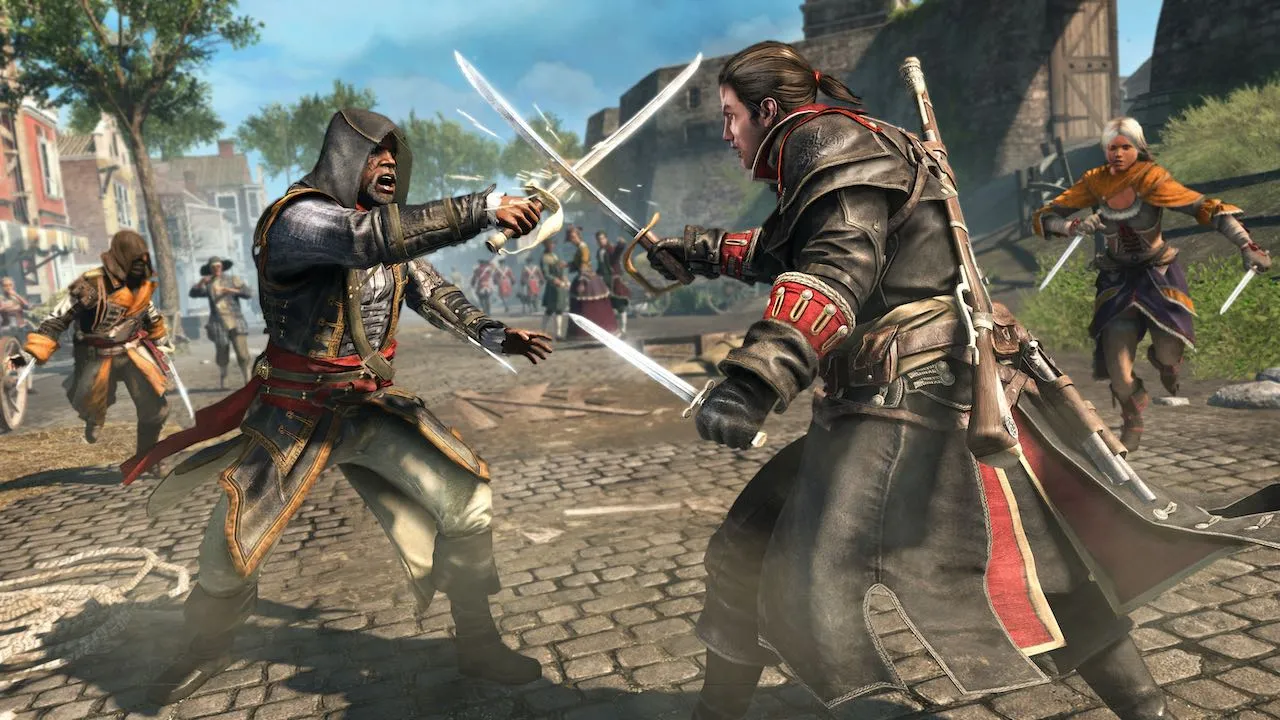 Shay aims his rifle at an unknown target
Shay aims his rifle at an unknown targetalt: Shay Patrick Cormac, armed with a rifle, prepares to engage a target in Assassin's Creed Rogue. His Templar attire and weaponry showcase his shift in allegiance.
Shay’s internal conflict adds depth to his character. He is driven by a sense of righteousness, not malice, making him a relatable and compelling protagonist. Rogue’s focus on this personal struggle and the nuanced relationship between the Assassins and Templars, rather than grand political schemes, makes for a more intimate and engaging story.
Historical Context and Fan Service
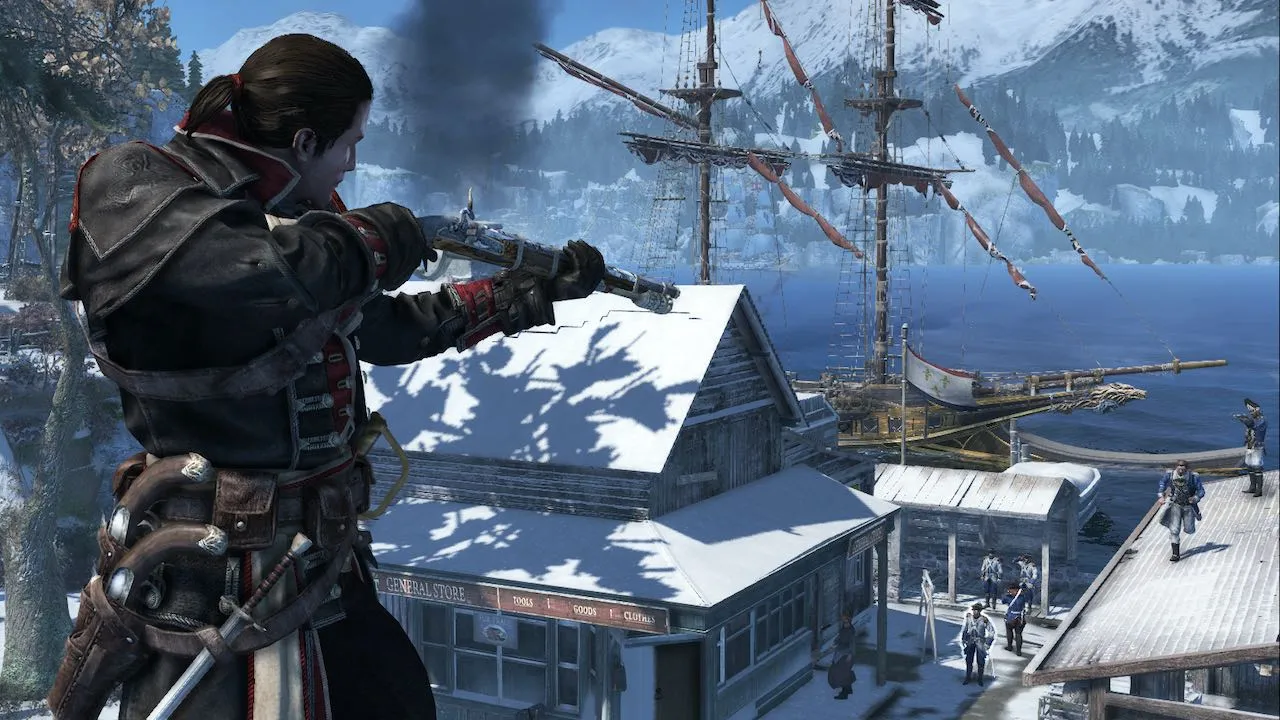 Shay sailing his ship through icy waters
Shay sailing his ship through icy watersalt: Shay Patrick Cormac captains his ship through the icy waters of the North Atlantic in Assassin's Creed Rogue, highlighting the game's naval exploration and combat.
Despite its personal focus, Rogue maintains the series’ historical element, weaving it cleverly into the main narrative. The game also provides fan service by bridging the gap between Assassin’s Creed III and Assassin’s Creed IV: Black Flag, even hinting at significant events in Assassin’s Creed: Unity.
While the plot has some flaws (why would Assassins pursue Pieces of Eden if they can’t weaponize them?), its strengths, particularly its character development and historical context, make it a worthwhile addition to the series.
Familiar Gameplay with a Fresh Twist
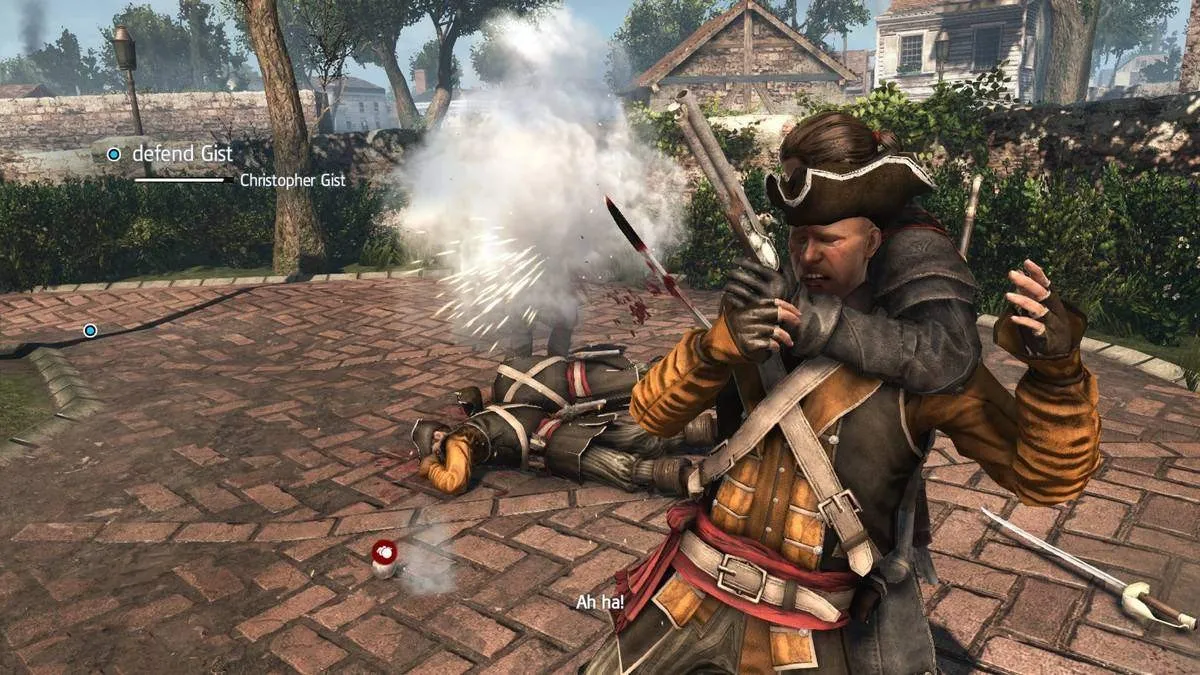 Shay aboard his ship during a storm
Shay aboard his ship during a stormalt: Shay Patrick Cormac navigates his ship through a storm in Assassin's Creed Rogue, demonstrating the game's dynamic weather system and naval gameplay.
Ubisoft’s open-world games, including the Assassin’s Creed series, have been criticized for relying too heavily on a formula: vast open worlds with repetitive side activities, chase and assassination missions, and map synchronization from high vantage points. Rogue, while adhering to this structure, offers some refreshing changes.
The game’s setting blends the environments of Assassin’s Creed III (forests, towns, and snowy landscapes) and Assassin’s Creed IV: Black Flag (open-ocean exploration). This variety keeps the gameplay fresh and avoids monotony.
Gameplay tweaks reflect Shay’s role as a Templar. Instead of intercepting carrier pigeons to assassinate targets, players intercept messages to prevent assassinations. High bounty hunters pursue Shay if he kills too many civilians. And rogue Assassins ambush him from hiding places.
Naval Combat and Exploration
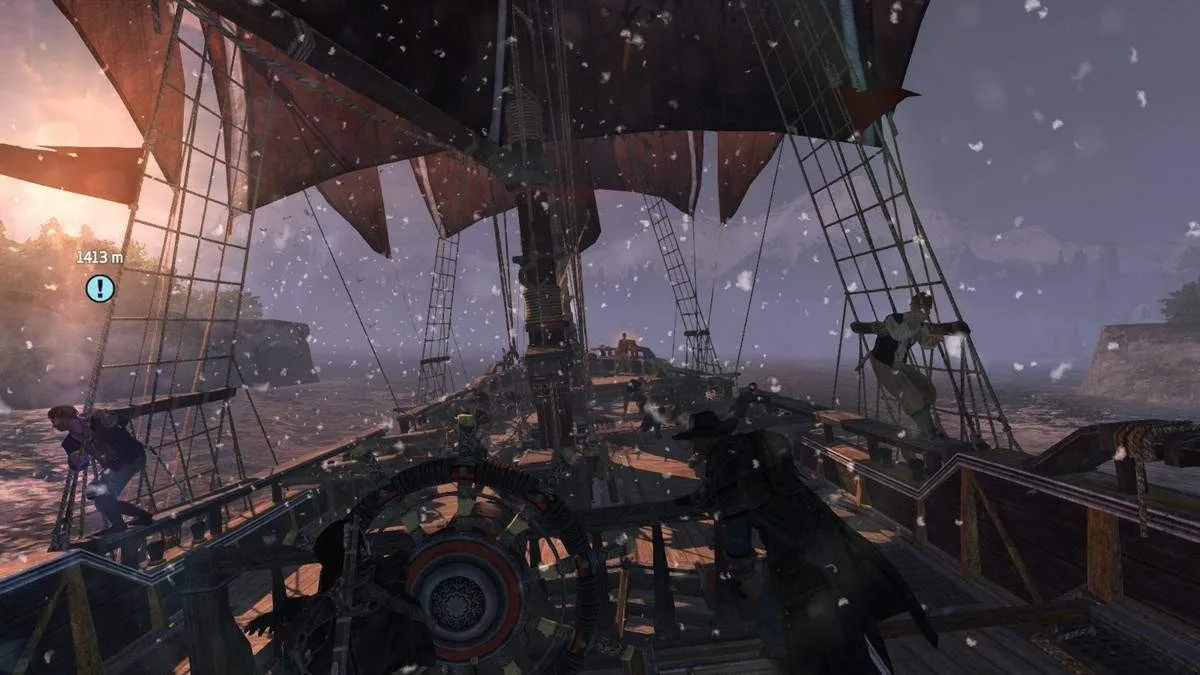 Shay's ship fires its cannons at an enemy vessel
Shay's ship fires its cannons at an enemy vesselalt: Shay's ship engages in naval combat in Assassin's Creed Rogue, showcasing the game's ship-to-ship combat mechanics and North Atlantic setting.
Naval exploration and combat remain a core element of Rogue. The North Atlantic and the River Valley provide distinct naval experiences. The North Atlantic, with its ice floes and huntable whales, narwhals, and polar bears, offers vast exploration opportunities. The River Valley, with its narrow channels and intricate waterways, presents unique tactical challenges.
Rogue’s gameplay builds upon familiar mechanics, adapting them to fit the game’s unique narrative and setting. Its shorter main storyline, compared to previous installments, avoids the feeling of overdrawn gameplay.
Persistent Issues Remain
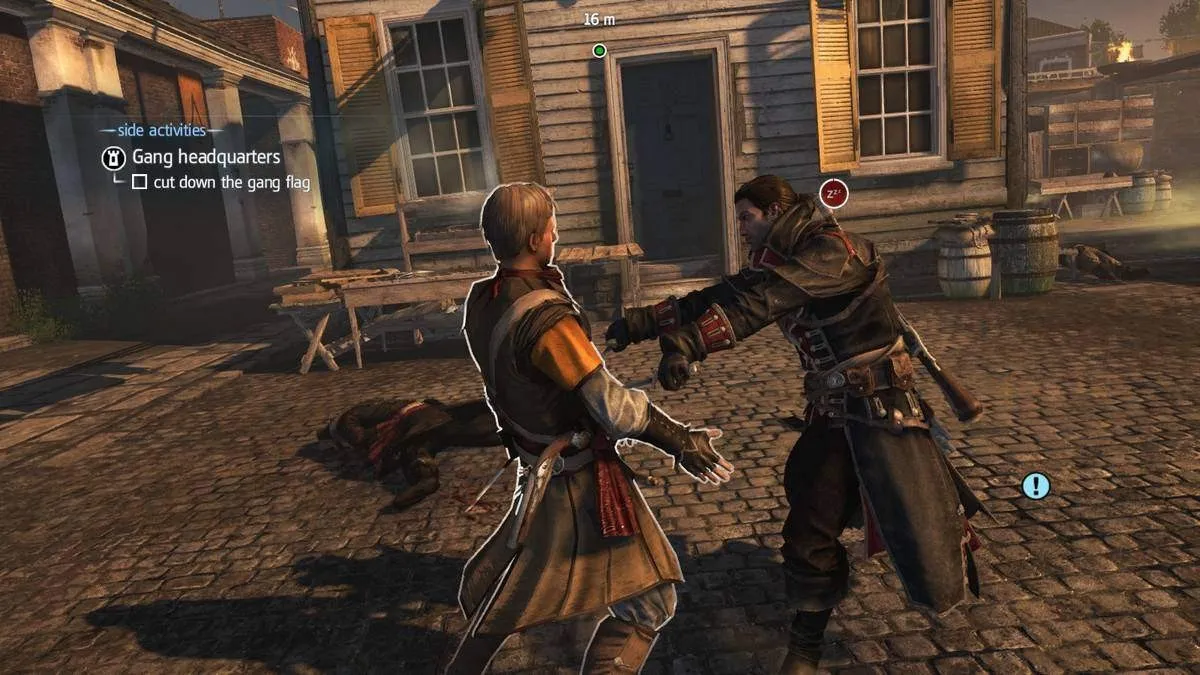 Shay fights multiple enemies on a snowy rooftop
Shay fights multiple enemies on a snowy rooftopalt: Shay Patrick Cormac battles multiple enemies in a snowy rooftop environment in Assassin's Creed Rogue, demonstrating the game's combat system.
Despite its strengths, Rogue inherits some persistent flaws from its predecessors. The free-running control scheme, while a series staple, can be clunky and counterintuitive, particularly for new players. For example, pressing Shift to descend from a ledge initiates a leap, while the “drop down” action requires a different key. This seemingly minor issue can disrupt gameplay flow and hinder mission execution.
A Lackluster Combat System
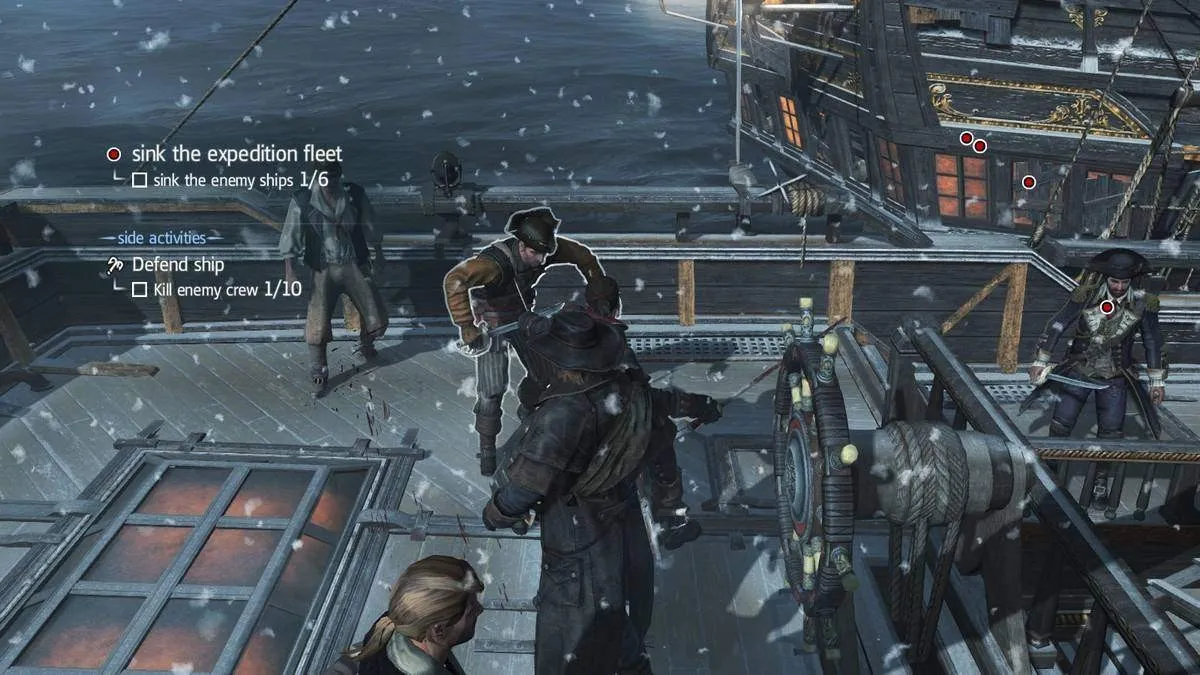 Shay stealthily eliminates an enemy
Shay stealthily eliminates an enemyalt: Shay performs a stealth assassination in Assassin's Creed Rogue, highlighting the game's stealth mechanics and Templar-focused gameplay.
Another major weakness is the combat system. Compared to other third-person action-adventure games, Assassin’s Creed’s combat feels repetitive and unsatisfying. The lack of visceral feedback makes combat feel weightless and disconnected. Animations are slow and sometimes lag, leading to button-mashing frustration. The forgiving counter system and simplistic enemy AI further diminish the challenge.
Rogue, while providing a compelling narrative and a fresh perspective on the Assassin-Templar conflict, ultimately falls short due to persistent issues with its control scheme and combat system.





Comments (0)